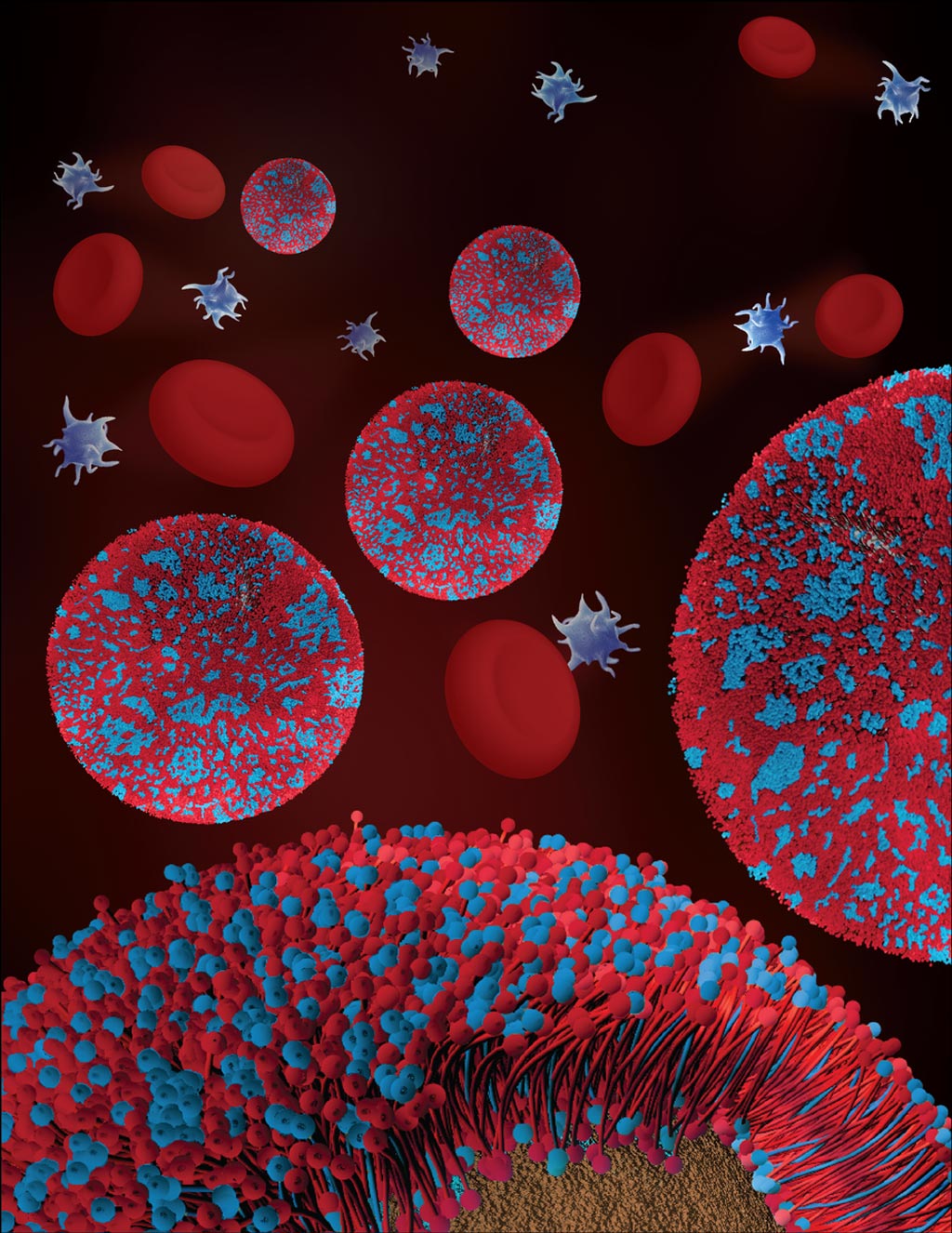Novel Macrophage Nanoparticles Created as Sepsis Treatment
By LabMedica International staff writers
Posted on 16 Jan 2018
A novel approach for treating sepsis is based on nanoparticles (so-called nanosponges) coated with cell membranes isolated from immune macrophages.Posted on 16 Jan 2018
Sepsis is a life-threatening condition that arises when the body's response to infection causes injury to its own tissues and organs. Sepsis is caused by an immune response triggered by an infection. Most commonly, the infection is bacterial, but it may also be from fungi, viruses, or parasites. Common locations for the primary infection include lungs, brain, urinary tract, skin, and abdominal organs.

Image: An artist illustration of nanoparticles coated with macrophage cell membranes (Photo courtesy of Nanomaterials & Nanomedicine Laboratory, University of California, San Diego).
Currently, there are no effective clinically available sepsis treatments, and care remains primarily supportive. In an effort to develop an effective sepsis treatment, investigators at the University of California, San Diego (USA) fabricated a novel type of macrophage biomimetic nanoparticle or nanosponge. The nanoparticles, made by wrapping polymeric cores with cell membrane derived from macrophages, possessed an antigenic exterior the same as the source cells.
The investigators reported in the October 24, 2017, online edition of the journal Proceedings of the [U.S.] National Academy of Sciences that by acting as macrophage decoys, these nanoparticles bound and neutralized endotoxins that would otherwise have triggered immune activation. In addition, these macrophage-like nanoparticles sequestered proinflammatory cytokines and inhibited their ability to potentiate the sepsis cascade.
In a mouse Escherichia coli bacteremia model, treatment with macrophage mimicking nanoparticles, termed M-Phi-NPs, reduced proinflammatory cytokine levels, inhibited bacterial dissemination, and ultimately conferred a significant survival advantage to infected mice.
"A wide range of endotoxins and pro-inflammatory cytokines naturally bind to macrophage cell membranes, so these nanosponges serve as universal traps for a broad spectrum of sepsis-causing molecules," said senior author Dr. Liangfang Zhang, professor of nanoengineering at the University of California, San Diego. "They can work across different bacterial genus, species and strains, and since they are covered in actual macrophage cell membranes, they can pass as the body's own immune cells and circulate the bloodstream without being evicted."
Related Links:
University of California, San Diego













